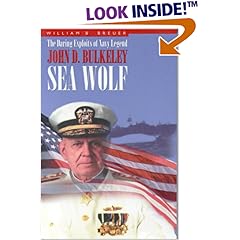Ropeyarn Sunday “Sea Stories” and Open Trackbacks
July 18th, 2007 by xformed
Open trackbacks….who could ask for anything more?
“Sea stories?” Yep, a sailor always has a few at hand….
Yes, I was politically incorrect, before we knew it was politically incorrect….
In September, 1980, I reported to my first shore based assignment at Fleet Combat Training Center, Atlantic. After two sea tours, I was looking forward to the assignment.
As a Lieutenant, I was put on the Base’s Command Duty Officer (CDO) watchbill, with a rotation of 1 in 30, the time being measured in days, not hours. So, once a month, roughly, I’d have to go to the XO’s office in the morning with the off-going CDO and do our turnover with him. Most of the work day was still spent working, but with a pager on your belt, in case something arose.
After work, you had various duties to attend to, such as sampling the meal at the mess hall, taking a drive around the base to spot check the buildings being locked, checking in the the Quarterdeck watch in Taylor Hall and generally ensuring the calm atmosphere, and being ready to answer the emergency calls.
Considering the sea duty I had come from, as well as most of my peers there, consisted of inport watch rotation being 1 in three days, and underway watches being port and starboard (a watch period on, then one off, then back to watch) of 4 (hours) on, 8 (hours) off, it was a holiday for us “Fleet Lieutenants.”
The watchbill consisted of all W-2s and -3s, and Ensigns to LTs. W-4s and LCDRs were exempted from the CDO Watch standing duties. Having more than 30 people in that category, after 32 more people of those ranks arrived, you would be freed from the rotation. Depending on the time you arrived, you may be on the watchbill 12 months, or maybe out to 18 months, it was all determined by the “Blind Watchmakers” at the Bureau of Personnel. For Unrestricted Line Officers like myself (those with the path to commanding a vessel or air squadron), that time frame comprised 1/2 to 3/4 of your two year shore duty assignment, normally coming after 3 years in the Fleet. We also had a number of “General Unrestricted Line” (“GURLs”) officers assigned to the base. These officers, with rare exception, were females, not being able to be sent to sea (this was before women were assigned to ships). Their tours, generally beginning at the rank of Ensign, were three year assignments. Their time on the CDO watch bill, at the worst, would span about 1/2 of their time, and no more.
I had been standing the CDO duties for just about a year, and I was due to roll off within about two months, when the command received a new Executive Officer. I don’t recall his name, but he was an aviator, and had been a POW in North Vietnam. After he had been in the saddle about a month, he asked the Senior Watch Officer why so many fleet experienced Lieutenants came to his office for CDO turnover, when he kept running into masses of Ensigns and Lt JGs who seemingly were all over the base, but off the rotation. The LCDR told him how the “membership” for the CDO list was set up and the XO apparently uttered some impolite words, indicating his displeasure. He then directed Rich to get out the linela number list (the precedence order of all Naval Officer) and put the 32 most junior qualified people in the rotation. It seemed the XO objected to post sea tour O-3s holding down the fort, when more junior officers were available.
Rich dutifully reworked the list and got it approved, then held a meeting of all officers in the W-2/3/O-1/-2/-3 range. I remember it pretty well. Certainly there was the aspect of “orders is orders” but not without the “happy sailors” doing what “happy” sailors do regarding a wide range of things, in this case, the fact that some people would be returned to standing watches that had “done my time.”
One junior LT, a GURL, commented loudly that “this is unfair!” I turned in my seat, and looked her in the eye and said words to the effect: “When you’ve got three years of sea duty behind you, standing 1 in 3 watch rotation, and I don’t mean days, I mean 4 hours on and 8 off, for months at a time, on the far side of the world, maybe you’ll see how spending the night on a base once every thirty days is pretty much a picnic.”
It got quiet. The meeting resumed, with direction from the Senior Watch Officer on implementation, and I don’t recall any more comments from any of the GURLs in the room before we dismissed.
I rolled off the watch bill after my next watch, not because of someone reported to the base, but because I was senior enough by lineal number to not have to do it any more. Net result: My lineal number saved me one duty day. I think that was the last time (and the first) my lineal number actually came into play in my career.
Category: "Sea Stories", History, Humor, Military, Military History, Navy, Open Trackbacks | Comments Off on Ropeyarn Sunday “Sea Stories” and Open Trackbacks












